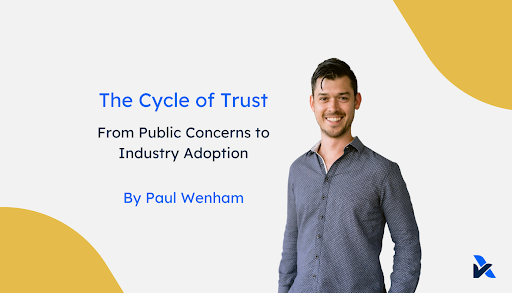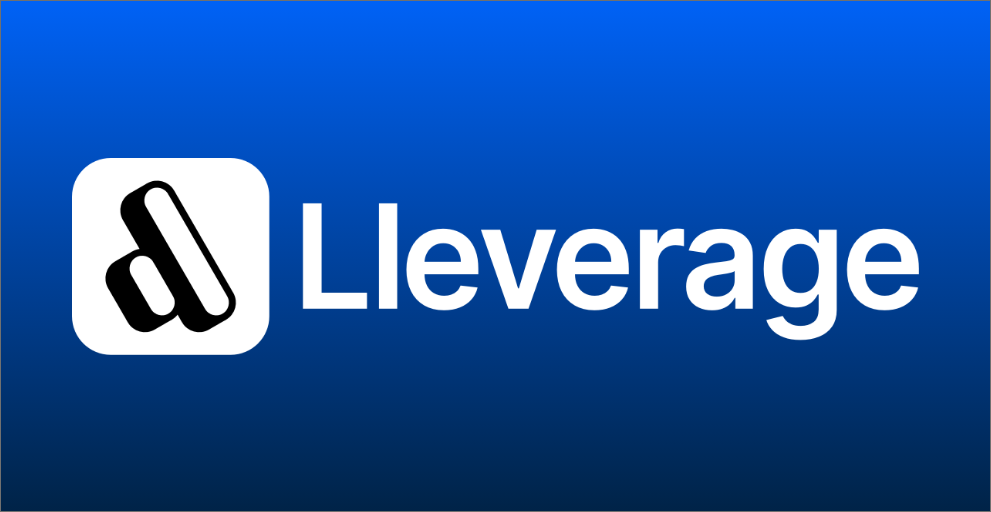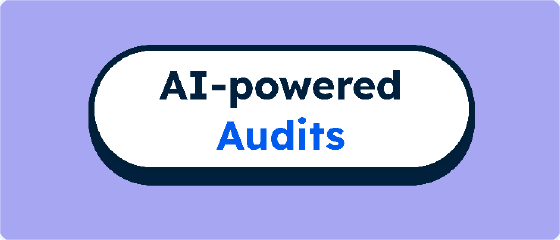
The Cycle of Trust: From Public Concerns to Industry Adoption
Trust is a balance between transparency, accountability and shared values. It impacts every aspect of our lives, from business to relationships.
In this third instalment of our trust blog series, we delve into the balance between public concerns, regulatory frameworks and industry adoption that contribute to the trust cycle.
The Dynamic Cycle of Trust
Trust is a balance between transparency, accountability and shared values. It impacts every aspect of our lives, from business to relationships. The trust cycle is the notion that trust is ever-evolving rather than earned and kept. In a business sense, this cycle is a continuous feedback loop between public expectations and corporate behaviour. Thus forming the cornerstone for a future where integrity and progress connect.
In this third instalment of our trust blog series, we delve into the balance between public concerns, regulatory frameworks and industry adoption that contribute to the trust cycle.
The Public's Voice: The Catalyst for Change
At the heart of the trust cycle is the public’s voice. A chorus of concerns and beliefs that capture the current sentiment in society. The public's interests span a diverse spectrum, ranging from financial security and data privacy to corporate social responsibility (CSR). People want to know that their investments and personal data are secure and the companies they engage with uphold values that align with their own.
These collective concerns serve as calls to action for regulatory bodies. They drive change, increase the standards set by organisations and urge advisory firms to adhere to comprehensive frameworks. These frameworks serve as guideposts for businesses, highlighting the expectations and requirements necessary to cultivate trust and credibility.
Frameworks: The Base of Establishing Trust
Frameworks are the building blocks that underpin the cycle of trust. They encompass a range of tools designed to bridge the gap between public expectations and corporate conduct. Regulations, standards, best practices and principles are part of each framework and collectively define what it means for a company to be compliant in a rapidly evolving landscape.
Each framework is designed to capture both the requirements and criteria for achieving relevant standards. The elements that make up each framework allow companies to not only meet the baseline expectations of their stakeholders but exceed them. Increasing the level of trust between both parties.
From Innovators to Mainstream Adoption
Once designed, each framework is presented to the public. Thus begins a journey of compliance. The introduction and take up of these frameworks mirror the Innovation Adoption Curve. This curve describes the cycle that people go through when adopting a new product or innovation.
Innovators are the trailblazers of change. They are the first to embrace new frameworks, understanding that they are a competitive advantage rather than another task of regulatory compliance. Their understanding and adoption of new frameworks place them at the forefront of heightened stakeholder trust.
As more businesses recognise the value of these frameworks, mainstream adoption occurs. Companies across all sectors acknowledge that compliance is not merely a regulatory necessity, but a strategic choice to increase trust and collaboration between businesses and their stakeholders.
Frameworks such as SOC 2 were once considered a ‘nice to have’ but are becoming the difference between taking your business to the next level or continuing on the same path.
Commercial Value of Trust: A Competitive Edge
Trust is no longer an abstract notion. Businesses and stakeholders alike are putting more emphasis on being able to trust each other.
Organisations that embody trustworthiness through adherence to frameworks gain a competitive advantage in their market. Businesses that cannot show trust through compliance find themselves at a disadvantage when seeking business growth and new opportunities.
The Future of Corporate Trust
The cycle of trust is an ongoing process built on the relationship between public expectations, regulatory frameworks and corporate social responsibility. As compliance becomes synonymous with credibility, businesses must adopt this shift in their way of operating.
The journey toward a future built on trust and compliance is one marked by collaboration, innovation and a commitment by businesses to make a positive impact on society.
The trust cycle is ever-evolving. Businesses must keep up to date with the concerns and needs of their stakeholders to gain and maintain their competitive advantage.
Read more in this series below and keep an eye out as we delve deeper into the symbiotic relationship between compliance and trust:
- Unlocking trust through compliance metadata
- The future of trust: how compliance paves the path forward
- The cycle of trust: from public concerns to industry adoption
- Navigating the three-sided path to trust and compliance
- Bridging the gap: unifying compliance language across the trust triangle
- Collaboration vs competition in an ever-changing compliance landscape
- The power of using compliance metadata
- The evolution of compliance frameworks







